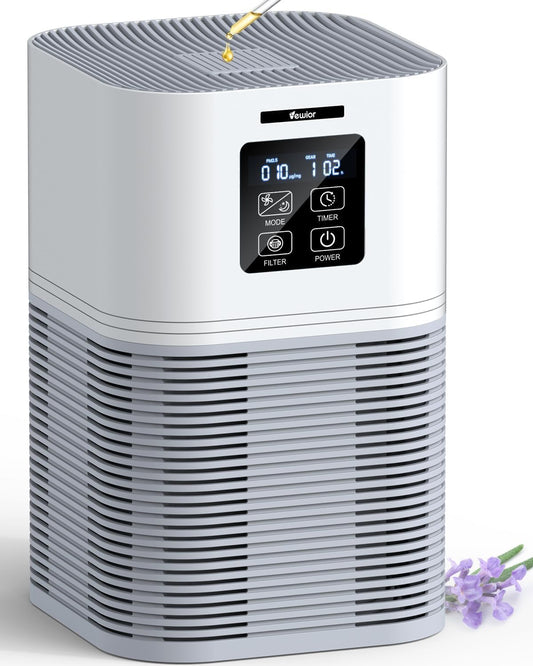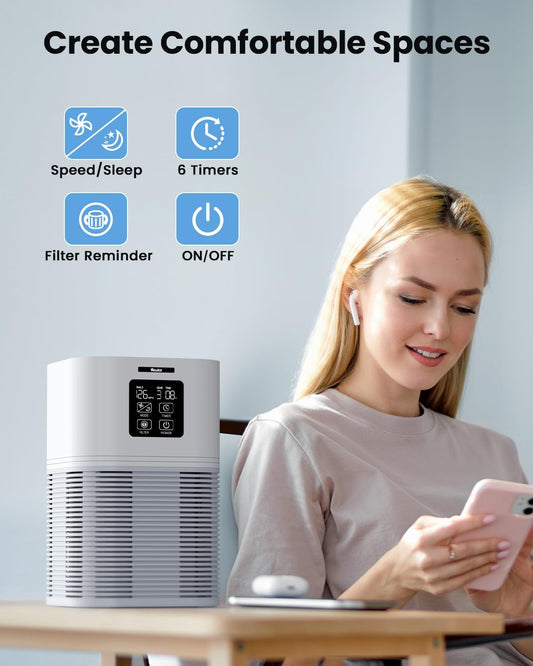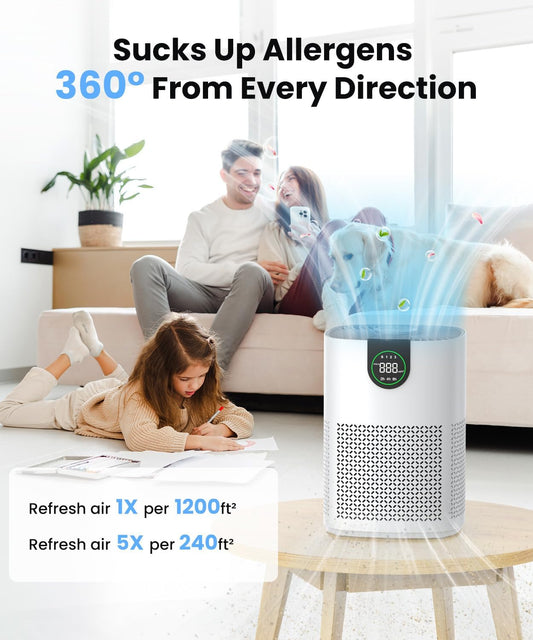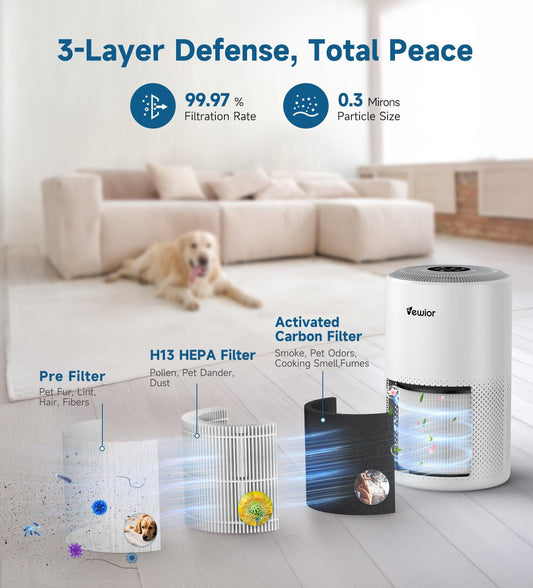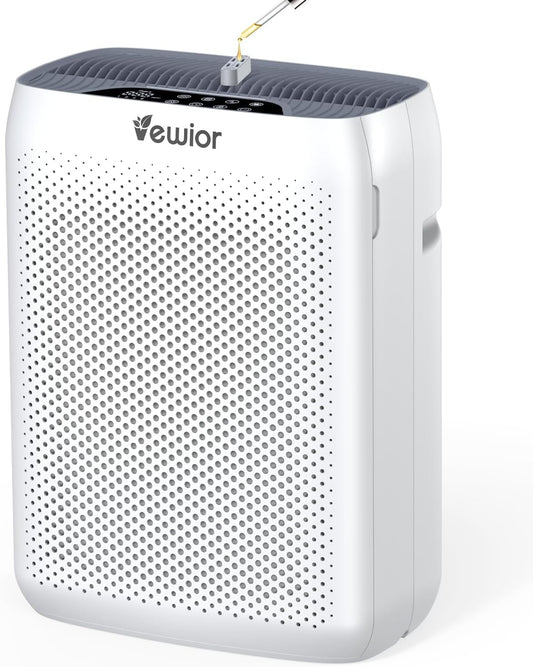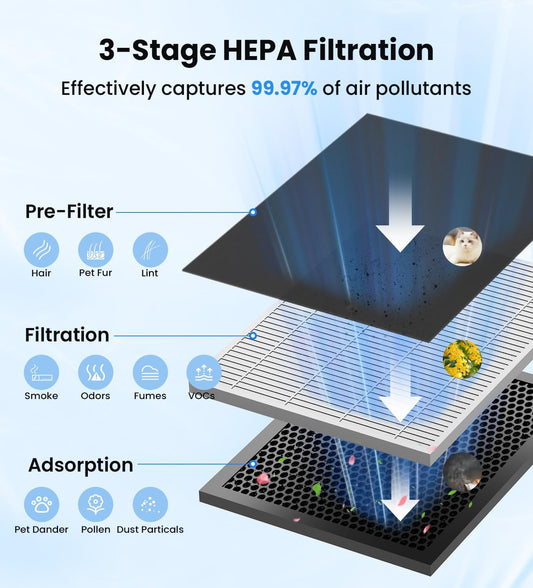Dust mites are tiny organisms that are present in every home. They feed on dead skin cells and can cause allergies and asthma in some individuals. These microscopic creatures can cause a range of health problems, from sneezing, coughing, and watery eyes to more severe symptoms, such as respiratory distress. One of the methods that people use to combat the effects of dust mites is by using air purifiers. In this article, we will examine whether air purifiers can get rid of dust mites.
How do air purifiers work?
Air purifiers work by using filters that capture particles in the air. Some of the most common types of filters used in air purifiers are HEPA filters, activated carbon filters, and UV-C lights. HEPA filters are designed to capture particles as small as 0.3 microns, which includes dust mites, pollen, and pet dander. Activated carbon filters work by adsorbing gases and chemicals in the air, which can help to reduce odors. UV-C lights are designed to kill bacteria and viruses, which can also help to reduce allergens in the air.
When air is drawn into the air purifier, it passes through the filter, where the particles are trapped. Once the air has been purified, it is released back into the room, where it can be breathed in by the occupants.
Can air purifiers get rid of dust mites?
While air purifiers are effective at capturing and removing particles from the air, they may not completely get rid of dust mites. This is because dust mites are not just present in the air; they also live in bedding, furniture, and carpets. Therefore, while air purifiers can help to reduce the number of dust mites in the air, they may not completely eliminate them from the home.
However, air purifiers can still be useful in reducing the effects of dust mites. By removing other allergens from the air, such as pollen and pet dander, air purifiers can help to alleviate the symptoms of allergies and asthma. This can make it easier for individuals to manage their symptoms and reduce the need for medication.
It is important to note that not all air purifiers are created equal. HEPA filters are the most effective at capturing particles, including dust mites. Therefore, when purchasing an air purifier, it is essential to look for one with a HEPA filter. Additionally, it is crucial to regularly clean and replace the filter to ensure that the air purifier continues to function effectively.
Other methods for reducing dust mites in the home
While air purifiers can help to reduce the number of dust mites in the air, there are other methods that can be used to eliminate them from the home. Here are a few tips:
- Vacuum regularly - Vacuuming can help to remove dust mites and their eggs from carpets and furniture. Make sure to use a vacuum with a HEPA filter.
- Wash bedding regularly - Dust mites love to live in bedding, so it is essential to wash sheets, pillowcases, and blankets regularly. Use hot water and a high heat setting on the dryer to kill any dust mites.
- Use allergen-proof covers - Allergen-proof covers can be used to cover mattresses, pillows, and box springs to prevent dust mites from living in them.
- Reduce humidity - Dust mites thrive in humid environments, so reducing humidity levels in the home can help to eliminate them. Use a dehumidifier to reduce humidity levels.
- Dust regularly - Dusting surfaces, such as shelves and furniture, can help to remove dust mites and their eggs.
Conclusion
In conclusion, while air purifiers may not completely get rid of dust mites, they can still be an effective tool in reducing the number of dust mites in the air and alleviating allergy and asthma symptoms. HEPA filters are the most effective at capturing particles, including dust mites, so it is important to choose an air purifier with a HEPA filter and to regularly clean and replace the filter.
However, it is also important to use other methods for reducing dust mites in the home, such as vacuuming regularly, washing bedding frequently, using allergen-proof covers, reducing humidity levels, and dusting surfaces. By using a combination of these methods, individuals can help to reduce the number of dust mites in their home and alleviate the symptoms of allergies and asthma.


